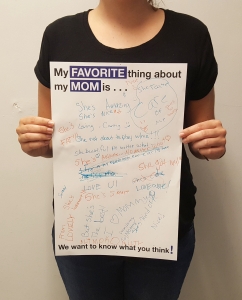After a year of using design thinking to solve problems I began to ask myself, “How can we design even more empathetically?” I wondered how design might be of use for those who are among the most vulnerable. For my Impact Project, I partnered with the Coalition on Temporary Shelter (COTS), a homeless shelter for families, located in Midtown Detroit. Most of the clients in the shelter are women and children. The first day I spent at COTS someone told me, “Everyone is a mother here.”
After spending more time at the shelter and talking with staff and clients I began to wonder how a designer could be of use in a realm where psychologists, life coaches, and social workers seemed to be most relevant. However, design and physical beauty are tied to one’s psyche. In this way, my project became focused on little ways to improve the daily life of the clients at COTS.
Though interviews, I found that though COTS has many resources, not many clients were utilizing them. Two questions arose: “How might we encourage clients to utilize COTS’ resources?” + “How might we make COTS’ resources more accessible to clients?”
I addressed these questions through the installation of a series of posters called “Elevator Engagement”.

Riding the elevator is a daily ritual that all clients partake in, making the elevator an informal gathering place. I posted sheets of paper with questions and prompts on them for clients to engage in. The goal of this prototype was to see if clients would engage at all, experiment with a new communication system between COTS staff and clients, and spread the love that is found in COTS resources like their Affinity Group and Life Coaching. I also posed questions that would encourage mothers and children to interact, knowing that mothers are more likely to make positive changes if they see that it will benefit their children.
In interviews I was told that clients were happy to have a bed and a roof over their head. But, we know that people deserve more than that. People deserve beauty, warmth, and dignity. Sometimes it’s small things that can begin to open that door, small things like a piece of paper taped on a wall asking questions like, “What is your favorite thing about being a mother”, “How do you define hope?”
